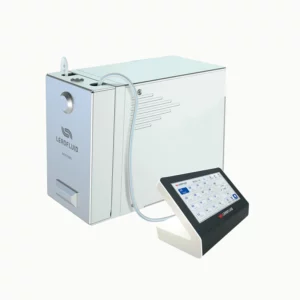Peristaltic pumps are widely used in various industries, including pharmaceuticals, food and beverage, and chemical processing, due to their gentle pumping action and precise fluid transfer capabilities. In this news article, we will explore two types of peristaltic pumps: high viscosity pumps and micro peristaltic pumps, and their adjustable flow rate capabilities for precise fluid transfer.

What is A High Viscosity Pump ?
A high viscosity pump, also known as a positive displacement pump, is a type of pump specifically designed to handle fluids with high viscosity. High viscosity fluids are thick and resistant to flow, making them more challenging to pump compared to low viscosity fluids.
High viscosity pumps are designed to provide the necessary force and pressure to move viscous fluids through a system. They operate by displacing a fixed volume of fluid with each pump cycle, ensuring a consistent flow rate regardless of the fluid’s viscosity. These pumps are commonly used in industries such as oil and gas, chemical processing, food and beverage, and pharmaceuticals.
High Viscosity Pumps For Efficient Handling of Thick Fluids
High viscosity pumps are designed to handle thick and viscous fluids, such as adhesives, pastes, and slurries. These pumps use a peristaltic motion to move the fluid through a flexible tube, which is compressed by rollers or shoes. Here are some key features of high viscosity pumps:
- Robust construction: High-viscosity pumps are made of heavy-duty materials to withstand the demands of pumping viscous fluids. The rollers or shoes used in these pumps are usually made of durable materials, such as stainless steel or ceramic, to prevent wear and tear.
- Adjustable flow: The high viscosity pump provides adjustable flow capacity, allowing the user to control the speed of fluid transfer. This feature is particularly useful when dealing with different viscosities or when dosing needs to be adjusted during manufacturing.
- Easy maintenance: High viscosity pumps are easy to maintain and require minimal downtime to clean or replace tubing. The tubing used in these pumps can be selected based on the specific fluid being delivered to ensure compatibility and prevent any adverse reactions.
Working Principle of Micro Peristaltic Pump
The working principle of a micro peristaltic pump is based on the concept of peristalsis, which is the contraction and relaxation of muscles to create a wave-like motion. In the case of a peristaltic pump, this motion is replicated by a set of rollers or lobes that compress and release a flexible tube or hose, thereby generating fluid flow.
A Pump That Delivers Fluid Precisely In A Small Space
Micro peristaltic pumps are designed for precise fluid transfer in small spaces, such as laboratory settings or medical devices. These pumps use a peristaltic motion to move the fluid through a small tube, which is compressed by miniature rollers or shoes. Here are some key features of micro peristaltic pumps:
- Compact Size: Micro peristaltic pumps are compact and lightweight, making them ideal for use in small spaces or portable applications. These pumps can be easily integrated into medical devices or laboratory equipment, providing precise fluid transfer capabilities.
- Adjustable Flow Rate: Micro peristaltic pumps offer adjustable flow rate capabilities, allowing users to control the speed of fluid transfer. This feature is particularly useful when handling small volumes or when dosing needs to be adjusted during the research or testing process.
- Low Shear: Micro peristaltic pumps provide gentle fluid handling, minimizing the risk of shearing or damaging sensitive compounds. This is crucial for maintaining the integrity and effectiveness of drugs and other medical products.
Adjustable Flow Rate Pump: Enhancing Precision and Efficiency
Adjustable flow rate pump capabilities are a significant feature of modern peristaltic pumps, allowing for greater control over the pumping process. Here’s how adjustable flow rate capabilities benefit high viscosity and micro peristaltic pumps:
- Flow control: Adjustable flow peristaltic pumps can precisely control the flow rate, allowing users to adjust the pumping speed according to their specific requirements. This flexibility is particularly useful when dealing with different viscosities or when dosages need to be adjusted during manufacturing or research.
- Gentle fluid handling: The ability to adjust the speed of the peristaltic pump ensures gentle fluid handling and minimizes the risk of shearing or damaging sensitive compounds. This is essential to maintaining the integrity and effectiveness of medicines and other medical products.
- Process optimization: Adjustable flow peristaltic pumps facilitate process optimization and allow users to fine-tune pump parameters. This optimization can increase efficiency, reduce waste, and increase overall productivity.
High viscosity and micro peristaltic pumps, with their adjustable flow rate capabilities, provide precise and efficient fluid transfer in various industries, including pharmaceuticals, food and beverage, and chemical processing. These pumps offer robust construction, compact size, and easy maintenance, making them ideal for handling thick fluids or precise fluid transfer in small spaces. With the ability to adjust pumping speed, peristaltic pumps provide enhanced process control, gentle fluid handling, and optimization opportunities. As industries continue to advance, peristaltic pumps will play a crucial role in meeting the evolving needs for precise fluid transfer and efficient production.